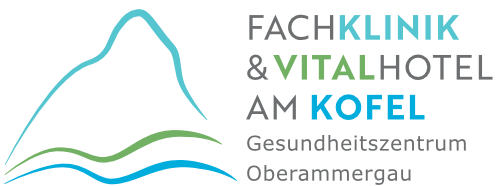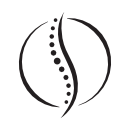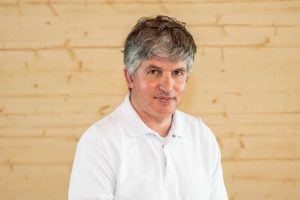Orthopaedics
Thanks to our interdisciplinary team and the joint definition of your rehabilitation goals, we are demonstrably able to extend your lifespan, minimize the burden of your illness and thus improve your quality of life. They should be able to participate in all areas of life again. Our aim is to make you an expert on your illness. If you know what to look out for, you will also know what you can be confident about.
Team
We are here for you
- Hip joint endoprostheses
- Knee joint endoprostheses
- Arthroplasty of other joints
- Operations on the spine, intervertebral disc, spinal canal stenosis, etc.
- Consequences of an accident
- Sports injuries
- Concomitant diseases
- Arthroses
- Osteoporosis
- Spinal disorders, e.g. disc problems or herniated discs
- Diseases of the musculoskeletal system (muscles, ligaments, tendons)
- Malformations, incorrect statics, dysfunction, incorrect posture of the locomotor organs
- Chronic pain of the musculoskeletal system
Disease patterns and therapy
The disease (anatomy, frequency)
Wear and tear of the hip cartilage
Like a buffer, the cartilage tissue between the femur and pelvis prevents our bones from rubbing against each other without protection. However, this crumple zone can gradually recede, especially with increasing age.
Such signs of wear and tear can also be favored by hereditary predisposition and congenital malformations of the hip such as hip dysplasia or malpositions such as bowlegs or knock-knees. Diseases such as rheumatism, gout or metabolic disorders can also play a role, as can heavy physical strain at work or during sport, obesity or accidents.
Osteoarthritis affects many people – around one in two adults after the age of 60. One of the most commonly affected joints is the hip joint. However, not all coxarthrosis causes symptoms.
Complaints
If the joint disease is only mild, it usually does not affect the quality of life. However, if the cartilage wear progresses unhindered, the hip often hurts even at rest and at night. Sometimes the pain radiates from the groin to the knee. People with advanced coxarthrosis often have limited mobility and suffer from stiffness of the hip joint and thighs. Everyday things like tying shoes or climbing stairs are becoming increasingly difficult. The severe cartilage abrasion also frequently leads to inflammation in the hip joint. A joint effusion forms, the joint is overheated and reacts sensitively to touch.
Diagnostics
If pain and restricted mobility lead you to the doctor, he or she will ask you in detail about your symptoms and movement habits. During the subsequent physical examination, the doctor will check your posture and gait as well as the mobility and function of your hip joint and whether there are any visible or palpable changes.
An X-ray is usually sufficient to confirm the diagnosis of osteoarthritis of the hip joint. In unclear cases, further examinations such as magnetic resonance imaging (MRI) may be useful.
Treatment
What can those affected do themselves?
Get moving
As the cartilage itself has no blood vessels, it is supplied with nutrients from the synovial fluid. Every movement of the joint promotes the distribution of synovial fluid and thus improves the nutrition of the cartilage. Regular, moderate exercise can thus help to maintain the mobility of the joint. It also strengthens the surrounding muscles. Ask your doctor for advice on suitable types of sport. Swimming, cycling or Nordic walking, for example, are considered to be particularly easy on the joints.
Reduce excessive weight
Every pound too much puts additional and unnecessary strain on the joints. If you lose any excess weight, you will relieve the strain on your hip joint.
Conservative treatment options
Pain therapy: Painkillers and anti-inflammatory medication can relieve pain in the short term.
Physical measures: For example, heat or cold applications and electrotherapy can alleviate the symptoms.
Orthopaedic aids: Insoles, special shoes or crutches can, if necessary, correct misalignments and thus relieve the hip joint.
Physiotherapy: Regular physiotherapy can have a positive influence on the course of the joint disease. Gait training and coordination training, for example, ensure that the joint is relieved and becomes more flexible again. Patients can also do appropriate exercises at home.
Surgical treatment options
Surgical intervention is usually considered in cases of advanced hip joint arthrosis with severe symptoms. However, all non-surgical measures should be exhausted before considering this option. Doctors differentiate between joint-preserving and joint-replacing surgery. The insertion of a so-called total endoprosthesis – TEP for short – is the most common surgical technique. Both joint surfaces, the acetabulum of the pelvis and the femoral head of the thigh bone, are replaced with artificial implants. As an artificial joint has an average lifespan of around 15 to 20 years, this option should only be chosen if conservative measures no longer help with the symptoms.
Rehab and AHB (requirements, benefits)
After a hip operation, a 3-week rehabilitation period (follow-up treatment) is the rule, i.e. rehabilitation immediately or a maximum of two weeks after hospitalization.
The hospital stay for arthroplasty surgery is five to ten days.
Typical rehabilitation goals
- Improvement when climbing stairs in alternating step / in readjustment step
- Improvement of the gait pattern (symmetry, rhythm)
- Increase mobility of the hip joint
- Removal of aids e.g. crutches
- Knowledge on dealing with the hip TEP in everyday life
- Information on fall prevention
- Improvement of wound healing
- Pain reduction
Therapy at the GZO
- Diagnostics
Joint measurement, specialist visits, wound assessment, fall risk assessment, blood count, ECG, X-ray check if necessary (off-site) - Optimization of pharmacotherapy (in particular drug-based thrombosis prophylaxis)
- Physical training
- Individual physiotherapy (incl. gait training, use of crutches, instructions for climbing stairs),
- Group gymnastics with coordination, balance and everyday life training
- Medical training therapy
- Exercise pool
- Manual and mechanical lymphatic drainage, massages, mud packs
- Knowledge transfer about the disease (presentation on total hip replacement)
- Wound care and thread pulling
- Nutritional advice
Being overweight is a risk factor that puts pressure on the joints. A healthy diet helps to keep the new hip TEP healthy; if required, nutritional advice is available in the form of individual counseling, group counseling and healthy cooking. - Social care and prescription of medical aids
- Psychological counseling and therapy
Learning relaxation methods PMR, imagination, Qi Gong; individual and group discussions if required.
What happens at home?
- Outpatient physiotherapy (advanced gait training and muscle building)
- Rehabilitation sport https://bvs-bayern.com/rehasport/rehasport-naehe/
- Until 16 weeks after the day of surgery Reintegration into everyday life, society and possibly work*
- From the 4th month of sporting ability for low impact sports*
- From 6 months of age, fit for high impact sports*
*lt. Post-treatment recommendation 2019 of the German Society for Orthopaedics and Trauma Surgery
The disease (anatomy, frequency)
Osteoarthritis affects many people – around one in two adults after the age of 60. Osteoarthritis is a degenerative joint disease. Signs of wear and tear of the joint cartilage and mechanical changes also play a role. There are many different causes of osteoarthritis, including incorrect loading, metabolic disorders, injuries, obesity and mechanical influences due to bow leg or knock-knee misalignments. All causes can trigger cartilage damage, which can lead to complete cartilage loss over time. When the bones are no longer covered with cartilage, the pain begins. The pain can develop gradually and also promotes instability of the knee joint.
Complaints
Affected people often report what is referred to as “stress and start-up pain”. This is pain that occurs when walking or after long breaks, e.g. when getting up in the morning. Other symptoms of osteoarthritis of the knee include joint pain, joint stiffness and swelling.
Diagnostics
If pain and restricted mobility lead you to the doctor, he or she will ask you in detail about your symptoms and movement habits. During the subsequent physical examination, the doctor will check your posture and gait as well as the mobility and function of your knee joint and whether there are any visible or palpable changes.
An X-ray is usually sufficient to confirm the diagnosis of osteoarthritis of the knee joint. In unclear cases, further examinations such as magnetic resonance imaging (MRI) may be useful.
Treatment
What can those affected do themselves?
Get moving
As the cartilage itself has no blood vessels, it is supplied with nutrients from the synovial fluid. Every movement of the joint promotes the distribution of synovial fluid and thus improves the nutrition of the cartilage. Regular, moderate exercise can thus help to maintain the mobility of the joint. It also strengthens the surrounding muscles. Ask your doctor for advice on suitable types of sport. Swimming, cycling or Nordic walking, for example, are considered to be particularly easy on the joints.
Reduce excessive weight
Every pound too much puts additional and unnecessary strain on the joints. If you lose any excess weight, you will relieve the strain on your hip joint.
Conservative treatment options
Pain therapy: Painkillers and anti-inflammatory medication can relieve pain in the short term.
Physical measures: For example, heat and cold applications as well as electrotherapy can alleviate the symptoms.
Orthopaedic aids: Insoles, special shoes or crutches can, if necessary, correct misalignments and thus relieve the hip joint.
Physiotherapy: Regular physiotherapy can have a positive influence on the course of the joint disease. Gait training and coordination training, for example, ensure that the joint is relieved and becomes more flexible again. Patients can also do appropriate exercises at home.
Surgical treatment options
Surgical intervention is usually considered in cases of advanced knee joint arthrosis with severe symptoms. However, all non-surgical measures should be exhausted before considering this option. Doctors differentiate between joint-preserving and joint-replacing surgery. The insertion of a so-called total endoprosthesis – TEP for short – is the most common surgical technique. As an artificial knee joint has an average lifespan of around 15 years, this option should only be chosen if conservative measures no longer help with the symptoms.
Rehab and AHB (requirements, benefits)
After a knee operation, a 3-week AHB (follow-up treatment) is the rule, i.e. rehabilitation immediately or a maximum of two weeks after hospitalization.
The hospital stay for arthroplasty surgery is five to ten days.
Typical rehabilitation goals
- Improvement when climbing stairs
- Improvement of the gait pattern (symmetry, rhythm)
- Increase mobility of the knee joint
- Removal of aids e.g. crutches
- Knowledge on how to use the knee TEP in everyday life
- Information on fall prevention
- Improvement of wound healing
- Pain reduction
Therapy at the GZO
Diagnostics
Joint measurement, specialist visits, wound assessment, fall risk assessment, blood count, ECG, X-ray check if necessary (off-site)
Optimization of pharmacotherapy (in particular drug-based thrombosis prophylaxis)
Physical training
- Individual physiotherapy incl. Gait training, use of crutches, instructions for climbing stairs,
- Group gymnastics with coordination, balance and everyday life training
- CPM motor rail
- Medical training therapy
- Exercise pool
Manual and mechanical lymph drainage, massages, mud packs
Knowledge transfer about the disease (lecture on total endoprosthesis)
Wound care and thread pulling
Nutritional advice (being overweight is a risk factor that puts pressure on the joints. A healthy diet helps to keep the new knee TEP healthy; if required, nutritional advice is available in the form of individual advice, group advice, healthy cooking)
Social care and prescription of medical aids
Psychological counseling and therapy (learning relaxation methods such as PMR, imagination, Qi Gong; individual and group sessions if required)
What happens at home?
- Outpatient physiotherapy (advanced gait training and muscle building)
- Outpatient physiotherapy
- Sports that are easy on the joints without impact loads e.g. swimming, cycling, walking
- Rehabilitation sport https://bvs-bayern.com/rehasport/rehasport-naehe/
The same applies to herniated discs, neuroforaminal stenosis
The disease (anatomy, frequency)
The spine has a complex structure. Our vertebrae lie on top of each other and form the so-called spinal canal on the inside. Spinal canal stenosis is a narrowing of the spinal canal. Bone spurs or soft tissue press on the spinal cord and constrict it. This creates pressure on the nerves passing through it and possibly also on parts of the central nervous system. This usually causes severe back pain and even neurological deficits.
Complaints
Affected patients usually suffer from back pain and pain in the legs. The walking distance is shortened and frequent breaks are necessary (claudicatio spinalis)
Possible complaints are
- Numbness or tingling in the legs
- Legs that feel heavy
- the discomfort and pain become more severe when walking or standing
- Restless legs at rest (restless legs)
Diagnostics
If pain and restricted mobility lead you to the doctor, he or she will ask you in detail about your symptoms and movement habits.
Magnetic resonance imaging (MRI) or CT is used to visualize the spinal cord in the spinal column. The MRI visualizes the intervertebral discs, the nerves and possible spinal canal stenosis.
Treatment options
What can those affected do?
Conservative treatments
- Muscle relaxation
- Physical therapy (bath therapy, mud therapy)
- Back training and physiotherapy treatments
- Infiltrate local anesthetics and cortisone if necessary
Surgical treatments
- Microsurgical decompression
- Spondylodesis (spinal fusion surgery)
- Interventional pain therapy
Rehab and AHB (requirements, benefits)
Typical rehabilitation goals
The basic aim is to maximize the patient’s independence and mobility. Followed by pain reduction. The impairments and impairments should be eliminated by means of complete restitution. In addition, social participation and activity should be made possible by restoring the original structure and function as far as possible.
The aim is to shorten the period of incapacity for work, facilitate reintegration into everyday working life and reintegration into the personal environment, and strengthen the potential for self-help with the involvement of the personal environment.
Therapy at the GZO
- Diagnostics
Specialist visits, blood count, ECG, MRI/CT follow-up if necessary (off-site) - Optimization of pharmacotherapy
Analgesics, muscle relaxants, vitamin B12, cortisone if necessary - Physical training
- Individual physiotherapy, group gymnastics with coordination, balance and everyday life training
- Medical training therapy
- Exercise pool
- Back training
- Massages and heat application if necessary
- Electrotherapy
- Knowledge transfer about the disease
Lecture on spinal diseases - Nutritional advice
Nutritional advice is available in the form of individual advice, group advice and healthy cooking - Social care and prescription of medical aids
What happens at home?
- Outpatient physiotherapy
- Outpatient physiotherapy
https://www.online-physiotherapie.de/uebungen/ruecken/spinalkanalstenose/
Aftercare
As aftercare, you will be given home exercise programs and put in touch with social services.
Aftercare advice is provided by our doctors, sports therapists and physiotherapists, particularly with regard to further participation in orthopaedic group gymnastics and medical training therapy.
Necessary aids (support stockings, shoe inserts, toilet seat raisers, rollators, etc.) can be prescribed during the stay.
Our discharge management team and social services will be happy to answer any further questions you may have.
Benefits of orthopaedic rehabilitation
The primary aim of the rehabilitation measures is to enable people to participate (again) in those situations or areas of life that are important to them, despite their continuing impairments.
At the beginning of the rehabilitation program, (realistic) rehabilitation goals are agreed with you. Both physical-functional, educational and socially-active goals are set.
Examples of this are
- “be able to climb two flights of stairs again”,
- “be able to play with the grandchildren again”,
- “Optimization of risk factors such as 2kg weight reduction”.
Goals connect therapist and patient and thus improve the therapy outcome. Goals strengthen self-efficacy and lead to higher overall patient satisfaction.
To achieve all these goals, we work in an interdisciplinary team. This consists of physiotherapists, sports and occupational therapists, doctors and nursing staff, nutritionists, psychologists and social services.
Another focus is on the treatment of risk factors.
The patient is guided into an active role through training. This has been proven to ensure that the rehabilitation measure lays the foundation for sustainable prevention. (performance-oriented behavior in everyday life, fall prevention, etc.)



